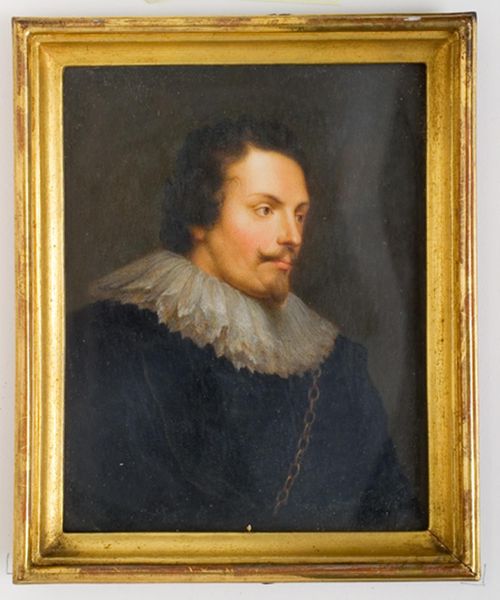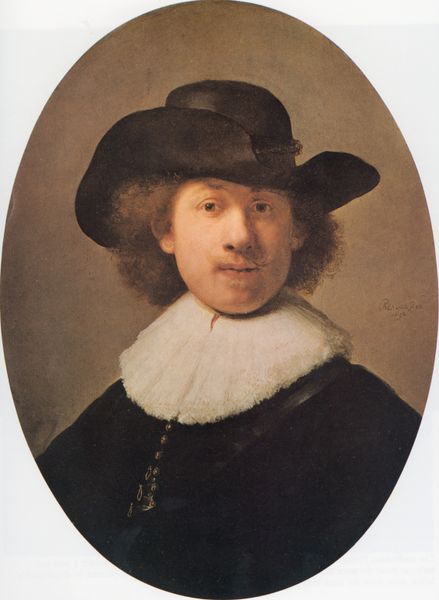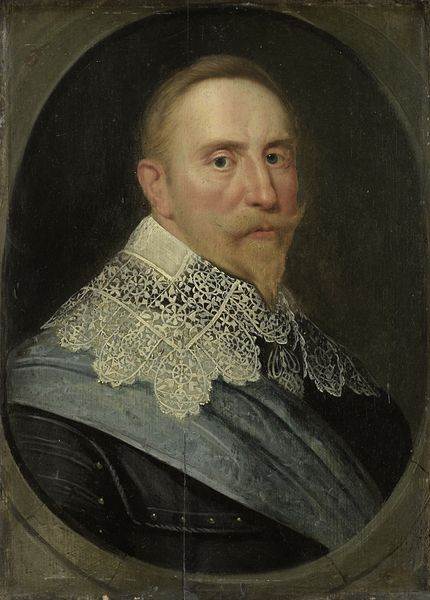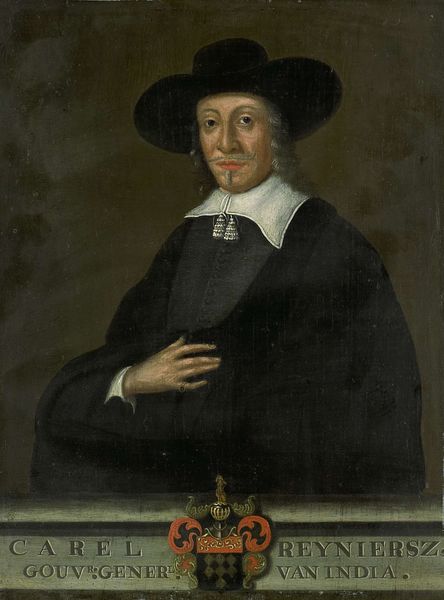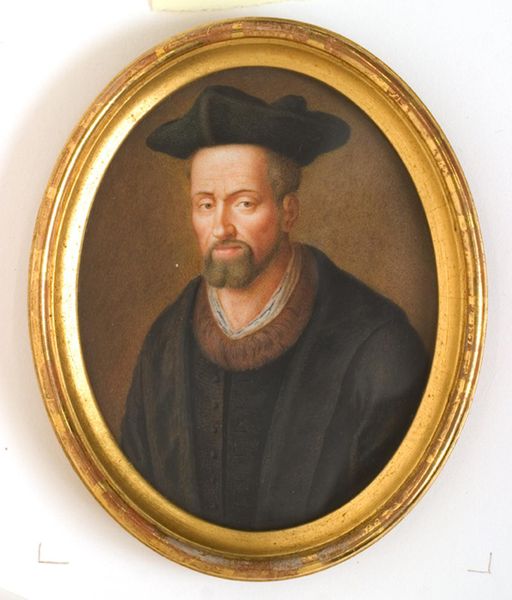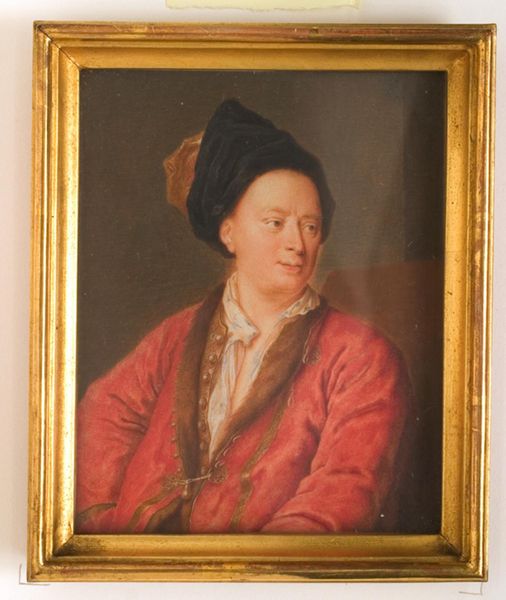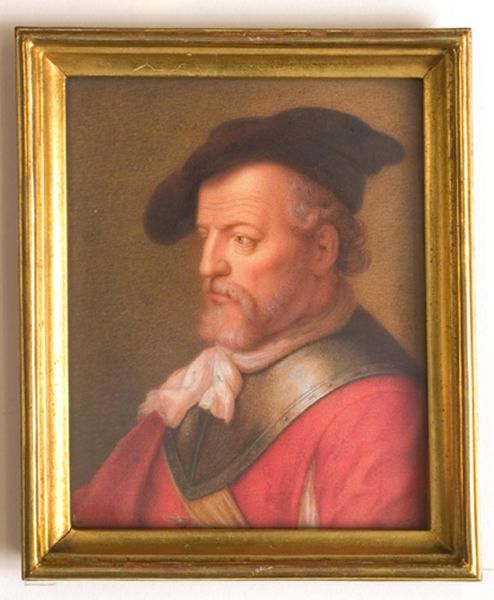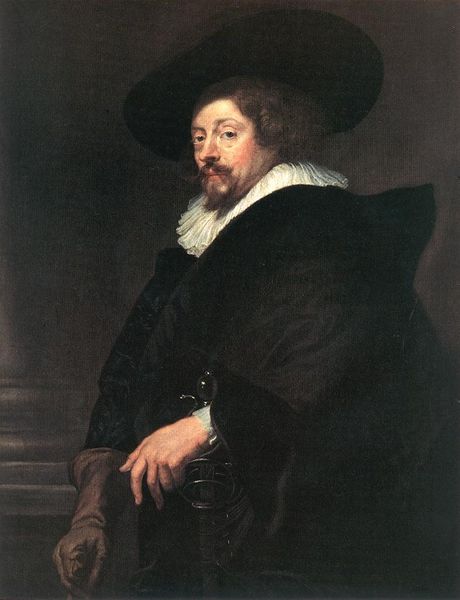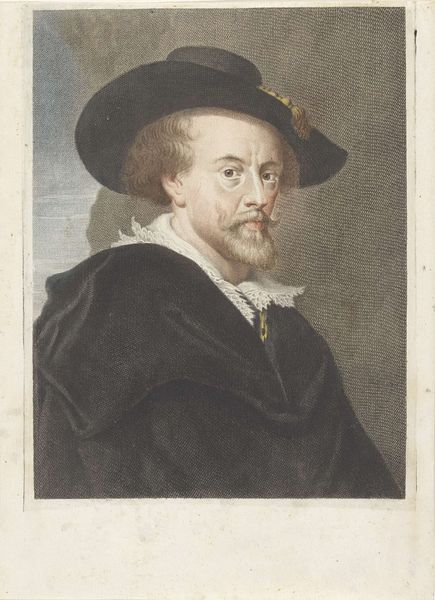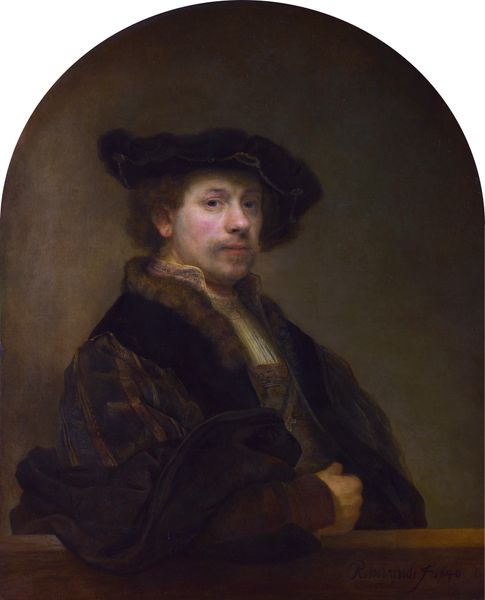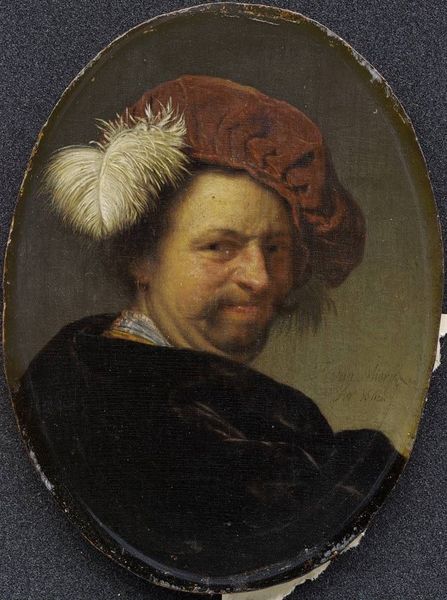
oil-paint
#
portrait
#
self-portrait
#
baroque
#
oil-paint
#
portrait drawing
#
history-painting
#
portrait art
#
realism
Dimensions: 7.5 cm (height) x 5.6 cm (width) (Netto)
Curator: Welcome. Here we have "Portræt af Rubens," or "Portrait of Rubens," an oil-on-panel work attributed to David Gardelle, dating roughly from 1726 to 1748. It's currently housed here at the SMK, the Statens Museum for Kunst. Editor: There's a certain theatricality to this piece. I feel as if I've stumbled upon a moment in a play, perhaps right before a rather cunning monologue. Curator: The composition certainly emphasizes that potential drama. The artist's meticulous detailing of light and shadow constructs a compelling contrast between the figure and the subdued, atmospheric background. Notice how the formal realism intersects with Baroque portraiture conventions. Editor: Absolutely. And I love that the man appears to be almost peering out at the viewer, weighing them up in a manner that suggests he’s deciding how best to spin them into his narrative. There's definitely an interplay here between the controlled elegance of Baroque style and a raw, human observation. It is almost like the beginning of method acting... from centuries ago. Curator: Yes, exactly! The careful brushwork gives form and substance to his attire. But if we examine the planes of the face, and how the brush articulates the depth of those cheeks, it's undeniable that the essence of realism reigns supreme. Editor: You know, even the choice of what to include is fascinating. Why include that particularly flamboyant hat? Is it a sign of a man trying a bit too hard? And the mustache! Is that playful irony or deep conviction reflected on those carefully twirled ends? Curator: Those elements add an undeniable complexity to the painting’s semiotic landscape. We must decode the image considering historical costume and symbolism to find our interpretation. Editor: For me, it adds to the immediate impact and charm. I see him and wonder, not just “who is this man?" but "What does he *want*?” It’s what keeps me interested long enough to even bother with historical costume and symbolism! Curator: In essence, it seems Gardelle succeeded in generating dialogue between the portrait and the beholder that remains charged centuries after its creation. Editor: Agreed! An intimate invitation to question character, era, and perhaps our assumptions of both. A little wink across the ages, daring us to interpret it however we see fit.
Comments
No comments
Be the first to comment and join the conversation on the ultimate creative platform.

